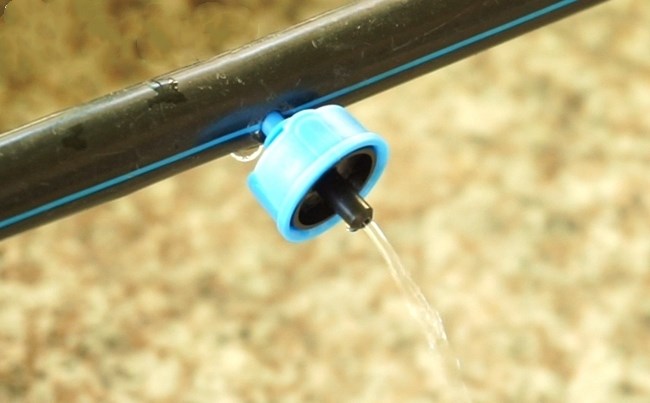The integration technology of drip irrigation, water and fertilizer has been widely used in the field of water-saving irrigation. Through the capillary emitter and low-pressure irrigation pipe system, the solution is needed by crops which can slowly and evenly drips into the root zone of crops. Then, the irrigation amount can be controlled very smoothly and accurately on the drip irrigation.
How to judge whether the irrigation amount is enough and how to avoid excessive irrigation?
The crops can be irrigated with high frequency and a small amount of water and fertilizer can be applied to the roots by the integration technology of drip irrigation, water and fertilizer so that the crops are always in a better water and fertilizer condition. It avoids the periodic, excessive and fewer water and nutrients produced by other irrigation methods.
However, compared with conventional furrow irrigation, its unique water and fertilizer supply mode and irrigation amount make the whole nutrient absorption process and transport mechanism of crops have obvious differences. Therefore, compared with conventional furrow irrigation, the integration technology of drip irrigation is significantly different from the soil temperature, water and fertilizer distribution, and salt transport. Shallow water and fertilizer supply and salt accumulation between mulches aggravate the distribution and growth of crop roots close to the surface, and limit the growth of a crop root.
In the process of drip irrigation, root system is the main organ for crops to absorb nutrients and water. The morphological structure of the root system determines the space and the range of the root system. It obtains water and nutrients as well as the resource competitiveness with adjacent roots. Therefore, root localization is the first step to avoid excessive irrigation.

There are two main methods of root location.
1. Dig
Dig a profile to see the root system in the soil.
2. Look
Direct observation: the root distribution is regularly scanned by professional equipment.
Indirect observation: moisture meter is used to indirectly reflect the root depth according to the characteristics of root water absorption.
After the root distribution depth is determinated, the control of drip irrigation depth is the second step to avoid excessive irrigation. The relative moisture content can directly reflect the initial moisture content of drip irrigation, which is often used as the basis of judging whether drip irrigation is needed and calculating irrigation amount.
There are two main methods to determine irrigation amount according to relative moisture content.
1. Experience
According to the field water capacity, soil relative moisture content, other soil water characteristics and the irrigation depth, the single best irrigation amount can be determined.
2. Equipment
Combined with the root distribution characteristics, the water monitoring equipment is embedded in the soil, and the irrigation equipment is controlled to start and stop by setting the limit.
To sum up, the roots can be irrigated and fertilized by the fertilization of drip irrigation. And it is necessary to understand the depth of the crop roots. According to the distribution characteristics of roots and soil moisture, the amount of single irrigation can be controlled.
